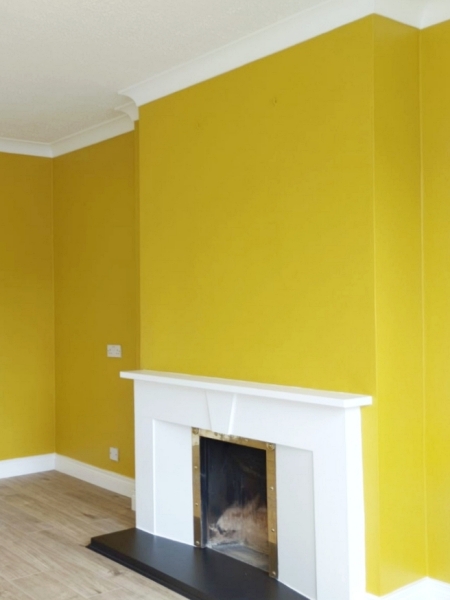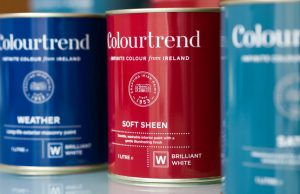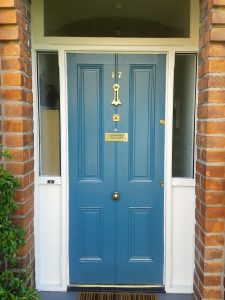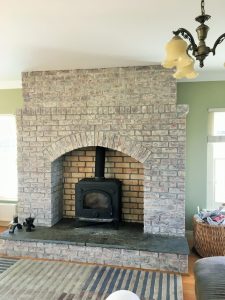How the colour of a room affects your mood and emotions
It is true when somebody goes about choosing colours for their home when decorating, whether consciously or unconsciously, they are reflecting aspects of their personality.
In turn, these colours will influence the moods and thoughts of the people that spend time in these rooms. So the fact that you are the one that is going to be living and spending the most time in your home; it is important to choose your colours wisely.
Over the years we at Impressions Painting and Decorating have witnessed many colour trends come and they go. The important thing is not to worry about these colour trends but to choose colours that suit your home, and make you feel most comfortable. It gets easier to choose colours when you learn some basic information about colour and its effects.
There are a few basic rules when choosing colours for your home before one gets too specific
- Colours, in general, vibrate in three basic ways, to activate, pacify, or neutralise.
- Colour can appear to change the shape and size of a room.
- Dark colours tend to bring the walls in to make a room appear smaller and make larger rooms warmer and more intimate, adding an air of sophistication.
- While light colours will tend to make the room larger and brighter.
- Bright colours on the ceiling will make it appear high, whereas a dark colour will bring the ceiling down and make it appear lower.
- Hence in period houses with very tall ceilings, you can paint darker colours, making the ceilings appear lower and creating a cosier atmosphere.
- In modern houses, the standard colour would be white for ceilings as not to make them appear to low.
What colours to paint your rooms and why?

Green rooms
As in nature found everywhere, this is the most restful colour both on the eye and the system, having a calming effect. Probably the best colour for a bedroom or snug. It is also a grounding colour and again aids concentration so it is also a good colour to put in the office or workplace.
Red rooms
This is a good colour that expresses excitement, raising the energy level in a room, hence you will find this colour in nightclubs and the like, raising blood pressure and heart rate. For rooms that one is only in at nighttime, it can lead to lively evenings lit by lamplight. Good for dining rooms and lively dinner parties. The colour red, it is said, also aids digestion. One can also choose a gentle shade of red for the bedroom.

Blue rooms
This more or less has the opposite effect on the system than red, having a calming effect, bringing the heart rate down lowering blood pressure. Blue is a good colour for concentration and increases work rate so it is good to have in your office. It is a relaxing colour to so it will keep the stress levels down. It is also good for kitchens and bathrooms, but be careful what shade, as you don’t want to cool the room too much, especially if it does not get much sunshine or light.

Pink rooms
Often associated with little girls rooms, pink is one of the best colours for calming people down and pacifying them. A good colour for bedrooms in its various hues, inducing relaxation and contentment. Studies show in England police put pink in their holding cells to see if it might pacify drunk and disorderly people, with outstanding results; finding that troublesome people were immediately quietened on being placed in the cell. But the police thought it not manly enough and went back to magnolia. The colour pink was banned in parts of the USA sporting fraternity, as American football teams would paint the visitors changing rooms a shade of pink, thus pacifying the opposition and allowing them to be beaten with ease.
Purple rooms
Associated with royalty and the rich. In the past the colour purple was not found in nature too often, so it was a hard dye to produce, so it was expensive, therefore thought of as luxurious and rich and special. Also, it is a very good complement to grey in a room as it lifts and warms the mood while remaining subtle.

Grey rooms
Grey, like various creams, is a neutral colour very popular these days making people feel calm and not threatened in any way. It is a passive and neutral low energy colour, not recommended on its own as the main colour in a colour scheme, but best used with complimentary colours as it is very flexible as to what one can put with it, again depending what one wants to achieve.

Yellow rooms
As one might think, yellow evokes sunshine and happy days. It’s a good colour for kitchens and bathrooms, but use sparingly and not as the main colour scheme too much yellow has proven to make people angry or frustrated. Not recommended for bedrooms as it is too “daytime”.
I know we have only scratched the surface of this subject, but perhaps it will give you some help with choosing colours for your home!
Are you looking for expert painters and decorators in Dublin with nearly 30 years experience in painting colours?
Then call Paul at Impressions Painting and Decorating on 087 270 4879 or fill in the contact form and we’ll get back to you.




